




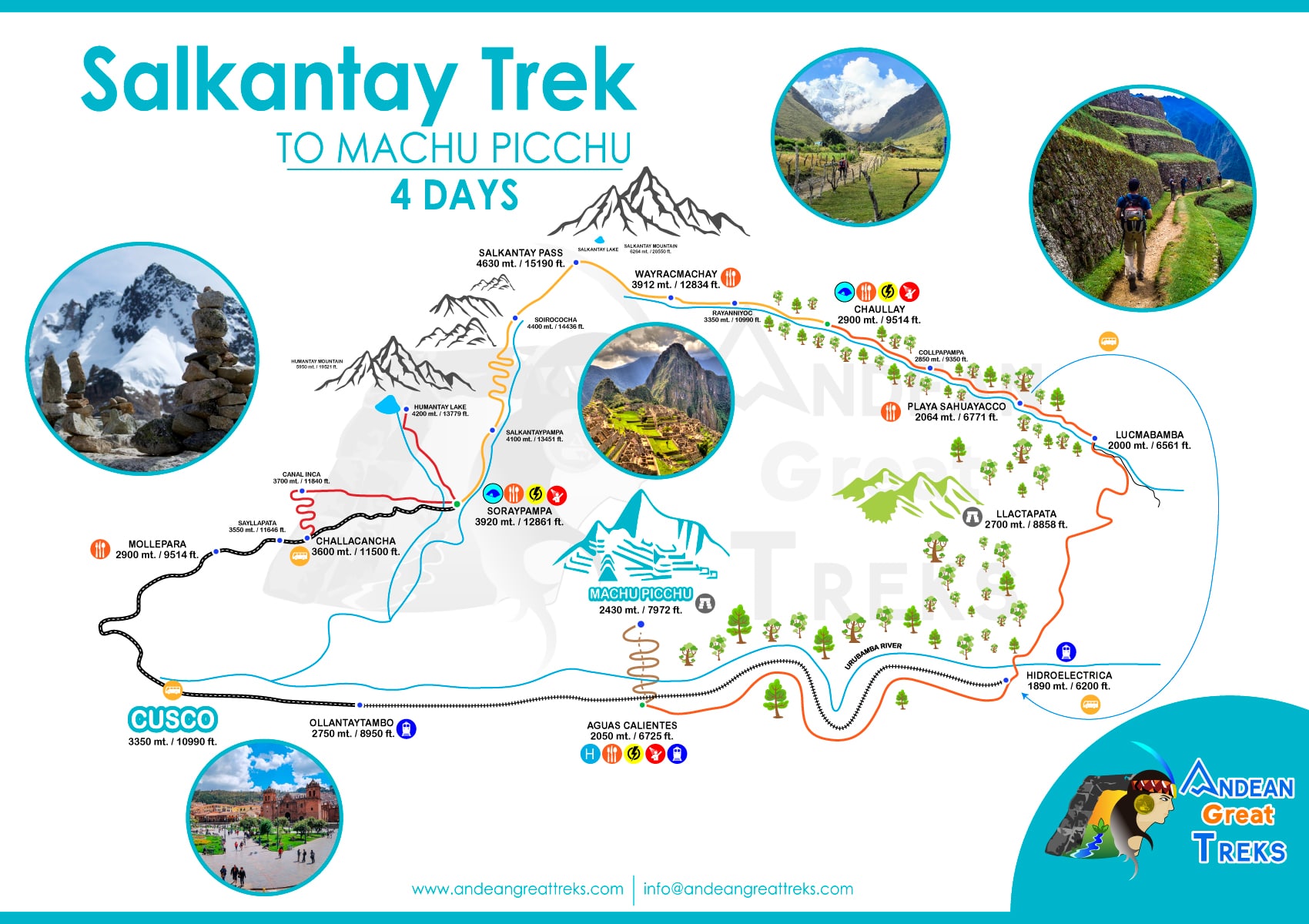 trip overview
included
Trip Highlights
activities
accommodations
itinerary
packing list
faq
essential trip information
best season to travel
price & availability
reviews
Reserve Online
trip overview
included
Trip Highlights
activities
accommodations
itinerary
packing list
faq
essential trip information
best season to travel
price & availability
reviews
Reserve Online
 CREATING AUTHENTIC TOURS IN PERU
CREATING AUTHENTIC TOURS IN PERU

Salkantay Trek is the second best option for those travelers who want to go to Machu Picchu, offering a totally full of natural scenes tour, passing through the foothills of the majestic Salkantay snow mountain, colorful villages where Spanish is the second language, and where the Andean people still maintains traditions that date back to ancient times. Unlike the Classic Inca Trail, Salkantay tour will take less visited places and with very little presence of tourists, allowing truly come into contact with the Andean world and interact with people.
If that’s still not enough to get your blood pumping, what better way to end the ultimate trip than with a visit to the Lost City of the Incas, Machu Picchu. You’ll enjoy a 2 hour guided for the most important inca sites such us Sun Temple, Sacred rock, Main plazas and shrines. In the afternoon you will board a train trip to the city of Ollantaytambo, during this trip you can enjoy the Andean landscapes at sunset and the mythical Vilcanota river. In general, this tour encompasses the best landscapes of Peru, which goes from the inter-Andean valley, the mountains with their snowy peaks, and the cloud forests. Come and enjoy the Salkantay Trek to Machu Picchu.
The Road to Salkantay is an old moderate alternative path, along the route you can see beautiful places with ecological diversity of flora and fauna, an excellent trekking route for travelers who love walks and adventures. It is recommended to have a physical activity prior to the trip based on daily walks, practice of some sport, which facilitates your physical performance on the way. It will cover a distance of 56 km crossing paths up and down, the maximum height of the route is 4,600 meters / 15091.86 feet where the cold is intense until reaching the minimum height of 2,400 meters / 7874,016 feet where the climate is tropical and humid . You will enjoy the wonder of the Machu Picchu world where you will take a tour of history always with the guide company it is recommended to stay with the group.
You’ll be up nice and early today to be ready for us to pick up around 4 a.m, You’ll travel in our comfy transportation with blankets to enjoy a bit more sleep on the drive. After 2 hours, we’ll enjoy a brief stop in Mollepata for an optional breakfast. We’ll then continue on to Challacancha, where we’ll start our hike.
First, you’ll meet the cooks and horseman, as well as do a last equipment check. Then, we’ll be on our way. You’ll start with a 3-hour moderate walk to Soraypampa (3,900 masl/ 12,795 fasl), where we’ll be spending our first night. The first section is relatively flat with a slight bit of uphill through a deep valley of glaciers. You’ll notice that a lot of the trail follows a restored Inca water channel, wich local farmers still make use of today.
Once you get Soraypampa, you’ll get settled in at our exclusive Andean Huts, where you will sleep this night. You’ll have a bit of time to rest after enjoying your first lunch in the mountains. Feeling refreshed, it’ll be time to start the hike up to the incredible Humantay Lake (4,200 masl / 13,780 fasl). This round trip takes 3 hours. There aren’t many places in the Andes quite as stunning as turquoise waters glistening against the Humantay glacier. Back at camp, you’ll enjoy a delicious and well deserved dinner with a beautiful sunset. Then you’ll be able to enjoy a night under the stars, constellations, and comets.
Accommodation: Confortable Andean Huts
Included Activities:
Meals Included:
You’ll be woken up today at the first signs of daylight with an energizing cup of coca tea to get you going. Enjoy a nourishing breakfast before we set off on our trek to the highest point of the route; the Salkantay Pass (4,630 masl/ 15,190 fasl). You’ll be walking 7 km / 4.32 miles over 3 hours. It’s a difficult ascent up the trail of the 7 snakes, rightly named due to its winding path.
Once you reach the top, you’ll appreciate the most magnificent view over the surrounding valleys as well as Salkantay Mountain (6,271 masl/20,574 fasl) sitting right next you; wich is the second highest in the Cusco. You can also observe Humantay, Tarcahuay and Pumasillo mountains. After you’ve taken in the views, you’ll start a walk downhill to the lunch spot in Wayraqmachay. Finally we will continue our trek down the valley with wonderful views, this section of the trail is rocky and gravely. Along the way you get some magical tropical forest and witness that changes quickly from the Andes to the Amazon. The clime this day becomes much warmer, with unique scenary and native plants.
Today we will camp in Chaullay ( 2,900 masl/ 9,514 fasl). You’ll be served a hearty meal in your Andean hut, and taking a peaceful night sleeping in the small village.
Accommodation: Confortable Andean Huts
Included Activities:
Meals Included:
After the breakfast, we will down to the village of la Playa. We will walk through the valley of Santa Teresa. You’ll enjoy a more leisurely walk with downs in the lush forest and rivers, waterfalls, orchids and many plantations of tropical fruits.
The path through which you walk will provide you with beautiful views, sometimes you can interact with the peasants of the area, who will explain the production process of their organic coffee, avocados, passion fruit , etc. You will also be able to learn more about the valuable product of the coca leaf, which was a leaf highly appreciated by the Incas and the oldest cultures of Peru. At noon we will arrive at the town of Lucmabamba (2,000 masl / 6,562 fasl) where we will have the lunch and rest, then we take the transportation towards Hidroeléctrica. Later we continue our trek and reach the modern town of Aguas Calientes around 17:00 hrs. In Aguas Calientes, our walkers will be staying at a hostel, and then will be able to get out and explore this picturesque town, which offers apart from its hot springs, many bars, cafes, Internet kiosks, etc. Overnight in the hotel in Aguas Calientes.
Accommodation: Hotel in Aguas Calientes
Included Activities:
Meals Included:
Today you have to get up very early to go to the bus station for Machu Picchu, since the first buses board at 5:30 am. The Machu Picchu ticket that we will reserve is for circuit 1 or 2 of the 6:00 am schedule. You must be with your guide to pass the control. Once inside, you must climb the steps to the part of the terraces of the guardian’s house sector, from where you will see the Inca citadel of Machu Picchu. For three hours you will explore the Inca sites and temples, your visit to Machu Picchu will end at approximately 9:00 am.
Then you must return to the town of Aguas Calientes, walking it is 1 hour. Or if you want to go down by bus it is an extra cost of 12 usd. You can also choose a restaurant for lunch, since this is not included. The return train is scheduled for 2:55 pm, to the Ollantaytambo station, where the minibus is waiting to take you to Cusco, arriving at approximately 7:30 pm. The final point is Plaza San Francisco, which is two blocks from Plaza Cusco.
When packing for your Salkantay Trek, you should keep in mind that it is best to dress in layers due to the weather variation. The variety of clothes that you must pack to dress in layers is key to your walk, from the morning when it is quite cold until mid afternoon when the temperatures rise and reach their peak and then freeze again at night.
Stratification is also useful as you ascend high passages that are exposed to winds or descend into shady valleys. Effective stratification only works if each layer allows moisture to pass and escape into the external environment. In fact, the best layered clothing, such as wool, promotes moisture transfer through its absorbent properties. Cotton and denim absorb moisture and, therefore, should be avoided.
 warm jackets
warm jackets
 Hydration bladder
Hydration bladder
 wool socks
wool socks
 camera
camera
 scarf
scarf
 first aid kit
first aid kit
 hiking shoes
hiking shoes
 Dry bags
Dry bags
 Trekking Poles
Trekking Poles
 sun cream
sun cream
 Snack
Snack
 sun hat
sun hat
 bathing suite
bathing suite
 rain coat
rain coat
 Sandals
Sandals
 insect repellent
insect repellent
 Passport
Passport
 Down Jackets
Down Jackets
 toilet paper
toilet paper
 daypack
daypack
 Wool cap
Wool cap
 head lamp
head lamp
 gloves
gloves
 sun glasses
sun glasses
 cap
cap
 extra cash
extra cash
 Trekking pants
Trekking pants
The Salkantay Trek is an old traditional alternative trail to the Inca Trail, along this route, you can see beautiful places with ecological diversity of flora and fauna, an excellent trekking path for adventure lovers. This hike is known as one of the alternate routes to reach the Inca citadel of Machu Picchu.
The excursion to Salkantay was recently named by the National Geographic Adventure Travel magazine among the top 25 hikes in the world!
Here are some of the frequently asked questions from our customers. Our Salkanay Treks Frequent Questions will help you to pack your personal item as well will answer questions and doubts you might have for Salkantay Treks to Machu Picchu; obviously that NOT all of your questions you find here; so that fill free to contact us to our e-mail address; we’ll be so glad to assist you.
The Salkantay trek route is located within the Cordillera de Vilcabamba, in the district of Santa Teresa, province of La Convención and department of Cusco. Therefore, to get to the beginning of the walk, we will first pass through the inhabitants of Limatambo and Mollepata.
The Salkantay Trail connects the city of Cusco with the Machu Picchu Inca Citadel and travels approximately 89 km / 55 miles through high Andean peaks, cloud forest, and misty jungle. The walk begins in the town of Mollepata, a few kilometers from Cusco.
The Mountain of Salkantay; is located in the Vilcabamba Mountain range, northwest of Cusco. Salkantay is one of the highest and most spectacular mountains in the Andes (6,271 m / 20,574 ft).
National Geographic Adventure Travel magazine named the Salkantay Treks are the 25 best hikes in the world.
During the Salkantay Trek tour you will cross different altitudes; from 4630 meters above sea level, being the highest point the Abra Salkantay and will descend to 2050 meters above sea level in the town of Aguas Calientes.
Below we show you the different altitudes you will find on the route:
Day 1: Cusco – Soraypampa – Soyroccocha
Day 2: Soyroccocha – Abra Salkantay – Huaraymachay – Collpapampa
Day 3: Collpapampa – Sahuayaco – Hydroelectric – Aguas Calientes
Day 4: Machu Picchu – Cusco
Altitude sickness or soroche as some call it is very common. Because, it is a natural reaction of the body when going through sudden changes in height. For this, the fundamental cause is the lack of oxygen in the body (hypoxia). It seems that this occurs in people who come from a very low altitude. Whose destination has an altitude greater than 2000 meters above sea level and consequently may have the following symptoms:
Mild symptoms:
This list of symptoms can be alleviated with coca leaf tea (highly recommended), altitude sickness pills (check with a doctor before self-medicating). For this reason, you must descend to a lower altitude area, drink hot infusions and remain completely at rest. If the situation does not improve, it is advisable to call a doctor.
Severe symptoms:
This list of symptoms, unlike the previous one, are more dangerous, they can be alleviated with the administration of oxygen through a mask. It is important to descend immediately from the altitude in which you are and medical attention is necessary since an inappropriate maneuver can be fatal for the patient. Likewise, it is suggested to keep the body hydrated by drinking at least 3 to 4 liters of water, avoiding alcoholic beverages, and adding a diet of carbohydrates and sugars.
It is recommended to do the following:
The Salkantay trek that you will experience features many variations of climates along the route. It probably reached heights of up to 4,630 meters above sea level and unraveled up to 2,010 meters above sea level. Therefore, it is recommended to arrive in the city of Cusco at least 2 days before the trek so that you can eat a light diet, eat little, drink plenty of water and rest well. That is, being able to be in favorable conditions, acclimatize and avoid being affected by the so-called “soroche” or altitude sickness. That generates some problems such as headache, shortness of breath, beautiful, dizziness, etc.
Age: It is recommended that children under 12 years of age and older do not do this walk because it is “challenging”. Also, because it has an extreme cold climate, it requires a good physical condition.
Health: The walk is open to the general public. But, health is a very sensitive issue to take into consideration. Almost, it is not recommended to do this walk for people who have respiratory and cardiac problems. Since, the oxygenation at higher altitude is lower and harder to breathe, which will make your walk more difficult.
Another important point that you must take into consideration before starting the walk. It is to be aware if you have allergies or food restrictions. For this reason, it is preferable to take your medications if you have them and strictly comply with them, remember that there are no hospitals on the walk.
If you do this walk hiring a travel agency, it is very important to inform these details. So that they can take the necessary precautions and bring what is necessary for you to enjoy this walk.
In order to make the Salkantay trek to Machu Picchu we must take into account the physical condition in which we find ourselves. To do this, we must prepare ourselves by strengthening our muscles and our endurance capacity for this walk. Because, it is not uniform and instead shows different levels of difficulty.
Thus, some specialists give the following recommendations:
Go hiking or walking:
It is advisable to walk gradually starting from 2 kilometers to 10 kilometers per day. Above all, to strengthen the muscles and test our endurance capacity. Also, we can make longer walks in mountainous areas that require a higher degree of difficulty. Taking into account that the second day of the Salkantay trek is 22 kilometers.
Breathing exercises:
To carry out the Salkantay trek, it is important to maintain the rhythm between our steps and our breathing to avoid rapid fatigue. For this reason, it is recommended to practice deep breathing exercises, diffracted breathing, full breathing and alternate breathing between nostrils and mouth.
Adequate diet:
Food is very important when doing this type of walk. Therefore, we recommend eating foods that are rich in iron and vitamin B, which helps us improve blood circulation, preferably eating green vegetables and fish.
Hydration:
Hydration is essential either on the walk or in our physical preparation so we will avoid energy wear and headaches.
In the Salkantay trek , the climate is very varied in the districts of Anta and La Convencion. Being within this department they share the same seasons. For this reason, the rainy season includes the months of November to March and the dry season that includes the months of April to October.
It should be noted that the climate in these provinces (La Convencion and Anta) is warmer and more humid, unlike the city of Cusco, which has a cold and dry climate.
Rainy season:
This season includes the months of November to March. During these months there will be rainfall that often causes landslides, very large rivers, the roads will become rough. Also, the sky will always be cloudy, in terms of temperature, the maximum recorded is 24 ° C and drops to 13 ° C.
Dry season:
This season includes the months of April to October. Therefore, it is advisable to take walks during these months because the roads are in better condition. The presence of rains is very occasional, there is no presence of landslides.
It should be noted that the months of June and July are the frost season. Probably, these months will be colder than usual, with an exceptional temperature of 23° C and a minimum of 9° C.
Most of this season the maximum temperature is 27° C and the minimum is 15° C, only in the frosty months (June and July) the temperature varies, having as maximum 25° C and minimum 10° C.
The dry season is the best time for Salkantay Treks to Machu Picchu. In Cuzco, the dry season lasts from April to November, and the wet season is from December to March. From June to September are the most popular months to hike Salkantay Treks, due to summer vacations in Europe and the US. It is generally thought that May and October offer the best weather conditions.
The temperatures to carry out this trek vary according to the season in which it is carried out, the temperature has an abysmal difference from the beginning of the trek until reaching Machu Picchu, where the Abra Salkantay is the highest point. Where, the temperature reaches -10 ° C, while we go down the temperature increases where it reaches a tropical environment in Aguas Calientes reaching a temperature of 26 ° C during the day and 12 ° C at night.
DAY 01:
The temperature of this day will vary since we left the city of Cusco, in the morning the temperature usually ranges between 0 ° C to 4 ° C. The temperature from the moment the walk begins will vary from 5 ° C to 15 ° C during the day, on the night of this first day where we camp Soyroccocha, the temperature drops to -8 ° C for being at an altitude of 4400 meters above sea level, this will be the coldest night of our tour we can have presence of snow and frost. Since, we will be located very close to the Salkantay Mountain.
DAY 02:
The temperature of the second day will begin with approximately -10° C, while the tour is being carried out the temperature will change reaching 4° C at the highest point, which is the Salkantay pass, from this point the temperature variation is more noticeable. clear as we begin to enter the edge of the jungle where the temperature can reach up to 23 ° C during the day, Colpapampa, where the second camp is located. So, this presents a temperature that ranges between 4 ° C to 10 ° C at night and early in the morning, due to the humidity that is typical of the jungle.
DAY 03:
The temperature of the third day usually starts with 0° C, during the tour the temperature increases up to 26° C. After the day walk we arrive at the town of Aguas Calientes where we will spend the night here, the temperature fluctuates between 2° C to 12° C at night and early morning this is due to the humidity of the area,
DAY 04 and 05:
The temperature of the fourth day usually starts with 0 ° C reaching up to 28 ° C during the day, some mornings you can see dense fogs which dissipate during the course of the morning.
The Salkantay trek trek presents challenging to moderate difficulty. Where, this can be seen on the 1st and 2nd day going through ascending and descending paths. From the 3rd day the road becomes more moderate. Where, the landscape will be part of our adventure to be in the jungle we will be able to appreciate the temperature change. The most important thing about this beautiful route is that we will see the different plantations of coffee, cocoa, avocado, granadilla, among others. The 4th day will be the most exciting, the easy walk visiting the beautiful citadel of Machu Picchu.
However, it should be noted that to carry out any type of walk you must be in constant physical preparation.
The amount you walk each day varies. An average day is 5-8 hours, but on summit night combined with the following day you can walk between 8 and 11 hours. Have a look at the itinerary for a day-to-day account.
The Salkantay Pass, at 14,760123 feet above sea level, is the most difficult section in the trail. Expect wind and cold temperatures. Some hikers might experience symptoms of altitude sickness. Symptoms will disappear as soon as you start your descent. Oxygen will be provided if needed. The Salkantay Pass, at approximately 4,650 meters above sea level is the most difficult section in the trail. These challenges are a result of several factors: the challenge of uphill climbing, bitter cold winds, low temperatures in general, and the fact that you are trekking at a low-oxygen altitude.
Yes, it is possible for a single traveller or a small group to hike the trek by themself, without guides or porters. However, the trail is not clearly marked at all points, which makes getting lost a high possibility. This is one of the biggest advantages of hiring a tour agency like Andean Great Treks. Our guides know the route very well.
Yes, this route include the entrance to the citadel of Machu Picchu. Therefore, on this route the visit to Machu Picchu takes place on the last day for a guide of 1 hour and 45 minutes. During this time the main centers of the Inca Citadel are visited, once the guide is over you no longer have the option of re-entering the citadel. For this reason, you should ask the guide for some recommendation to be able to spend a longer time inside the Citadel of Machu Picchu.
The visit time in the citadel of Machu Picchu is an average of 1 hour and 45 minutes to 2 hours, this time is the maximum that is used to be able to make the main circuit that contains the most outstanding sites of the Historic Sanctuary.
Note: You should know that there is no free time to visit on your own after the guide, unless you buy one of the extra hiking tickets (Huayna Picchu or Machupicchu Mountain) so you can re-enter the attraction.
On the last day of your adventure after the guided tour in the Llaqta of Machu Picchu, it is possible to do some of these famous walks that are Machu Picchu Mountain or Waynapicchu. Therefore, you should know that they are not included in the tour you contract with our travel agency.
The most important, to be able to purchase a ticket for any of these routes, is to pay an extra cost of 30 USD on average. Likewise, you must request the reservation of any of these walks 4 months in advance or more. Since, a limited number of tickets are offered per day which are highly coveted by hundreds of travelers.
Here are some differences based on these mountains:
Huaynapicchu Mountain:
Also known as “young mountain”, it is the most popular so income is quite limited. Therefore, you must make your reservation at least 5 months in advance. This mountain is located North East of the citadel of Machu Picchu, at about 2,700 meters above sea level, made up of archaeological remains, narrow and steep trails that really defy all gravity. For that reason, its great appeal.
Machu Picchu Mountain:
Also known as “old mountain”, it is not as popular as Huaynapicchu, but the route is surprising, consisting of abundant flora, wide and easy to walk trails, it is located to the South West of the citadel of Machu Picchu, at about 3,070 meters above sea level. , it is a hike that does not require much physical effort and offers wonderful panoramic views from the top. Tickets are limited, but they don’t run out quickly so there’s more time to make your reservation; it is recommended to reserve the entrance at least two months in advance.
When doing any of these routes, it is necessary to take into account the departure time of your train to Ollantaytambo (remember that your check-in is 30 minutes before your departure time). Similarly, you have to calculate the time. Since, you will have to queue for 1 hour to get on the bus that will take you to Aguas Calientes and this tour lasts 40 minutes.
Huayna Picchu :
The hike to the summit is approximately 45 minutes, along narrow and steep Inca stairs. Once at the top, you get to see the Citadel of Machu Picchu and its surrounding hills and valleys. This is the famous peak in the background of every iconic Machu Picchu photo. Summiting Huayna Picchu is always a top item on most Machu Picchu visitor’s lists which means that you usually need reserve this mountain 6 months in advance. Only a certain amount of people are allowed to hike this mountain each day (currently 400). Along this trek you’ll see breathtaking views of the Machu Picchu ruins. The limited number of tickets is a restriction set forth by the ministry of culture in Cusco, not by Andean Path Trek. This is completely out of our hands unfortunately.Tickets for this mountain are non-transferable.
Machu Picchu Mountain:
The hike to this summit is approximately 1.5 hrs. Once at the top, you get a much higher vantage point so you have an amazing view of the Citadel of Machu Picchu and its surroundings. This hike is a great alternative to Huayna Picchu. It is ideal for those who don’t want the hassle of fighting for a ticket, or who were unable to get one. Technically, spaces for Machu Picchu Mountain are also limited to 400 per day, as well it’s use to sold We simply need to reserve a space when we buy your entrance tickets. This trek is great because it will also take you high up like Huayna Picchu, offering great views. This trek has an easier incline (also making it accessible for those who fear the heights of Huayna Picchu), but the path is much longer making it equally as challenging in it’s own way.
The Inca Trail hike has an unique beauty for its archaeological remains, and ecological floors, orchids and birds. On the Salkantay route, the main attraction is the Humantay lagoon and the beautiful snow, there are no archaeological remains in the salkantay trek.
The Inca Trail has a higher cost because this route can only be operated with the help of porters, who are paid a salary according to the regulation of the Ministry of Labor. While in the Salkantay Trek it is done with the help of horses for the transport of trekking equipment, which makes it less expensive.
And we want to deny what in many blogs they are saying that the Inca Trail is very crowded, the truth is not so, in the Inca Trail, each group goes at its own pace and times, so it is rarely that you will meet the Groups except for the overnight camp. Lately on the Salkantay route, human activity has changed the true spirit of adventure, as many companies use modern lodge-like buildings, with the comfort of the case. And as additional information we want to give you that the Salkantay Trek route is also very crowded, even more than the Inca trail to Machu Picchu.
On the Inca trail you don’t see many villages, the whole circuit is far from civilization, while in the Salkantay Trek there are many towns and villages.
The level of difficulty is a very important aspect, since the Inca trail is the one that has the highest amount of ascents and declines with stairs, while the Salkantay Trek is only difficult the second day to reach the pass.
In what corresponds to the provision of hygienic services both have modern facilities, for the comfort of the client. In all camps and lunch points.
If you hike the Inca trail you will have the opportunity to see the sunrise of Machu Picchu from the sun gate. While in the Salkantay Trek you can only enjoy the sunrise into the citadel of Machu Picchu, which is also very beautiful.
The briefing is very important because that is when you will meet your guide. At this meeting, your guide will provide you with important details about the hike. If you participate in Challenge Salkantay Trek, you will receive a duffle bag for your personal belongings. During the briefing, you will also pay the balance of your walk. You will receive a map of our offices with your reservation information.
Yes. It’s very important!!! We recommend that you bring 300-400 Peruvian soles. You may not need this money, but in an emergency you should make sure you have enough money. If you have difficulties on the route, you can use the money to buy alternative means of transport such as: car, horse and train. If you’re on the 5-day hike, there are some additional activities along the way, including the hot springs.
Groups are generally 10-15 people. It also depends on the time of year. The maximum is 16 people and the minimum is 8 people.
It is recommended that you carry only the most important things for the tour, a backpack where you will carry your belongings and clothes for the Salkantay trek, and another small backpack that you will use during the trek where you will carry water, snacks, and jackets. Remember that this tour includes 5kg free for three days to carry the horse, then you must carry your luggage or you can pay an extra amount for it to be taken by train to the town of Aguas Calientes.
If you choose to take a private tour, the tour will suit you. The size of the group depends on you and only you. You can decide exactly who will be with you on the walk. It is perfect for couples, families or groups of friends. You will have your own personal leader and guide, which means the hike is more personalized and able to meet your personal needs.
If you are concerned about the walk, you have the option of hiring an additional horse. The cost is US $ 60.00. You can only ride the first two days of the promotion. In the last days, you will sometimes have the opportunity to unsubscribe and take a car or train for certain stages of the trek. In addition, you should keep in mind that the first day you will take a different route than those who choose to walk. You do not have to organize this in advance.
Yes, we will give you clean water with every meal and in the morning when you wake up.
At meal times we will give you teas, coffees etc to drink. You’ll come across a mountain spring, fountain or small stream approximately every 1½ hours along the trail where you can fill up your water bottle. Take a bottle of at least 1½ liter capacity per person. Although the water looks it is always safer to use sterilizing tablets or a water filter. The sterilizing tablets can be bought in most pharmacies in Cusco. With these tablets you have to wait between 30 and 40 minutes before drinking. Bottled mineral water can also be taken from Cusco or bought at Mollepata or Santa Teresa.
Having a good guide is an essential part of a good walking experience. For this reason, “Adean Great Treks” hires and works with some of the best guides in the business. Our guides have knowledge in the fields of history, archeology, ecology and are from the Cuzco region.
To continue working with our guides, we pay them a higher salary than most agencies and make sure they are treated well. They can use good quality sleeping bags, mats and food for free. The same goes for our porters and our riders.
Children under 14 years old are not allowed to do the trek, and children who are over 14 years old should be in good physical shape and used to hiking long distances.
Recently flush toilets have been built along the Salkantay Trek including all of the major campsites. This has helped a lot to improve sanitary conditions on the Salkantay Trek to Machu Picchu although conditions are still not always perfect. Each toilet block has cold running water. We recommend that you bring from hand-sanitizer to use after visiting the public toilets.
Walking sticks on the Salkantay Trek route is more recommended for those who have a little weak knees and ankles, or are not used to long walks. The level of difficulty of Salkantay Trek is moderate, since on this route you will not go up or down stairs like on the Inca Trail to Machu Picchu. In short, you should have the habit of walking with trekking poles. Otherwise they will be very uncomfortable. Another important aspect to keep in mind is that on day 2 we will have more than 4 hours of descent, and they could help you in the balance and balance of your body, since the terrain is very slippery if there is rain.
One of our strengths is the food we provide on the Salkantay Trek, which is why our company has been working with high mountain cooks for more than 10 years. They are going to bring you the best gastronomy of Cusco and Peru. At breakfast there will be scrambled eggs, omelets, pancakes, coffee, milk, butter, etc. Lunches are very nutritious (quinoa chaufa, steak, chicken stew, sauteed tenderloin, stuffed avocado, etc). And dinner is designed according to the type of weather, for example the first night you will have a refreshing soup for the cold and altitude sickness. The last day we will have dinner at a restaurant in Aguas Calientes. If you have any food restrictions, do not worry, since our chefs are prepared for all types of food restrictions, such as vegetarians, vegans, or allergies to gluten and others. All foods are prepared with fresh and organic ingredients, produced by the farmers of the Sacred Valley of the Incas.
Yes on the second and third night you will have access to electricity and Wi-Fi at an additional cost of 10 Peruvian Soles. And in your Aguas Calientes Hotel as well.
In the 5-day tour, the visit to the Llaqtapata viewpoint is made, from where you can enjoy an incredible view of the Sacred Sanctuary of Machu Picchu. On the other hand, in the 4-day tour you will be transferred after lunch in Lucmabamba, in a local transport to the town of Hidroelectrica, from where you will walk for 3 hours to the town of Aguas Calientes.
The support staff during our walk is as important as the guide, among them we have:
Guide: During your adventure on the Salkantay trek to Machu Picchu. The professional tour guide plays an important role. He is the person in charge of making your trip an unforgettable experience. Above all, he will complement the beauty of nature and the meaning of it. During the course of the walk, the guide will provide you with information related to cultural, historical, nature (flora and fauna) aspects that you will find along the way.
Cook: Usually, the guide introduces him to the group on the first day of the trek, assuring that he will be in charge of preparing the food for the travel group during the trek.
Muleteer: he is the person in charge of directing the horses that carry our luggage, food and camping equipment. During the first 2 days of the trek, they are usually people from the area who live in high Andean communities and are usually farmers. Therefore, they see this job as their only option as their only livelihood, in addition to the fact that they are in charge of installing our camping equipment.
You have to bear in mind that if you hire the services of a travel agency that is too cheap, be sure that the ones affected are the muleteers. Since, they mistreat them and pay them a minimum wage.
STEP 1
STEP 2
STEP 3
STEP 4
For Salkantay Treks of 4-Days or 5-Days, we recommended booking at less 1 or 2 months in advance. The government has strictly limited the number of people permitted on Machu Picchu (permits are issued to about 2500 per day). We therefore recommend that you try to make your reservation for Salkantay Treks to Machu Picchu as far in or as soon as you know the dates of your international flights.
Nov, Dec, Jan: the trek permits for some departure dates were sold out 3 months in advance. we therefore recommend making a reservation at least 5 months in advance, although I am sure there will still be trek permits available for some dates 3 or 4 months in advance. Departures around Christmas and New Year tend to sell out fast.
March, April, May and June: Many trek departure dates during these months have sold out as soon as the trek permits go on sale at the beginning of January so we would recommend making a booking before the beginning of December to allow us time to process your booking.
Our company will be able to refund a part of your reservation deposit, in case you cannot complete your adventure in the Salkantay Trek circuit. But this request must be sent to the company’s mail, with a minimum of 15 days before starting your Trekking. Otherwise you could be charged some administrative costs.
A very important issue to give, is that if you paid for the entire tour, and for any reason you decide to cancel the tour less than 48 hours, this can only be done under certain conditions, by your travel agent, who will inform you of the expenses that should cover.
We recommend making your reservation in advance and we will guarantee your Spaces for this hike.
Each reservation needs 50% of deposit as first payment. The final balance will be paid in CuSco (On the Briefing Day).
About Payment you must choose where you would like to make the deposit:
By Pay Pal or Credit Card
First, we will send you an email to confirm your payment.
Two weeks before your tour date, we will contact you by email to request the final payment. We will also ask you where you will be staying in Cusco, to be able to pick you up on the day of your hike.
After we receive the final payment, we will send you an email confirming your tour date and informing you of important contact information for our tour agency, as well as some final tips to prepare for the trek.
Once we have purchased your tickets, with your security deposit, you can only change your start date if you pay an additional amount. This amount is usually around $50 USD. The reason for this is the tickets we purchase are non-refundable and non-transferable, so we are not allowed to simply change your tour date.
Unfortunately, the 5% charge is completely out of our hands. This fee does not go to us, but to PayPal and VISA. There is really no way around it.
It’s best to pack lightly for Salkantay Trek. Generally hikers leave the bulk of their belongings safely in storage at their Cusco hotel, and bring only their hiking pack for the trek. This list ensures that you have everything you need for a guided trek without overburdening yourself.
Mountain clothing
Head:
Thorax / Core:
Bottom:
Hands:
Personal Team
Hiking gear
Electronics
Toiletries
Others
Any bags that you don’t need to take on Salkantay Treks it can be left at your hotel in Cusco. Nearly all hotels have a luggage deposit and rarely charge for this service as long as you are returning to the hotel after the trek. You can also leave valuables in the hotel safe, but remember to bring your passport and some emergency money. Or you also can store at our office.
Passing through a tropical zone and a high Andean zone we can observe a great variety of flowers and plants, many of them beautiful due to their shape and color. Also, other plants that are attractive due to their strange shape, some of them are even used as medicinal plants cared for since the Inca era.
Next, here we leave you some varieties of flora that you will be able to observe during the walk:
Orchids:
They are one of the most attractive species within the flora that can be seen on the Inca trail and the Salkantay trek. Also, within the route there are more than 300 species of these plants that dazzle you with their color, shape and even smell.
The most representative may be these, but the truth is that it is difficult to choose which one may be better.
In our Salkantay trek adventure to Machu Picchu we will be able to observe a great variety of birds and some mammals that we will detail below in a small list:
Mammals:
Birds:
Hummingbirds:
Want an in-depth insight into this trip? Essential Trip Information provides everything you need to know about this adventure and more.
View Essential Trip InformationThe best time to visit Peru is during the dry season, between May and November, when the weather is dry and bright, with more frequent rainfall occurring between November and April.
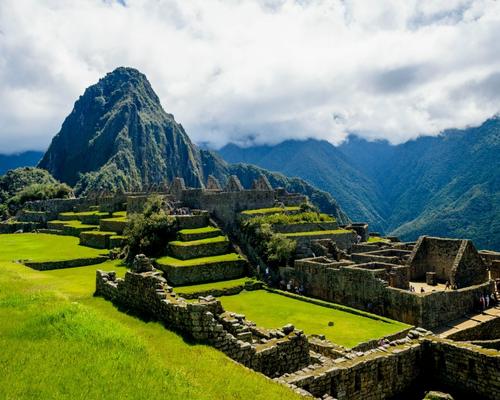 JANUARY
JANUARY
 FEBUARY
FEBUARY
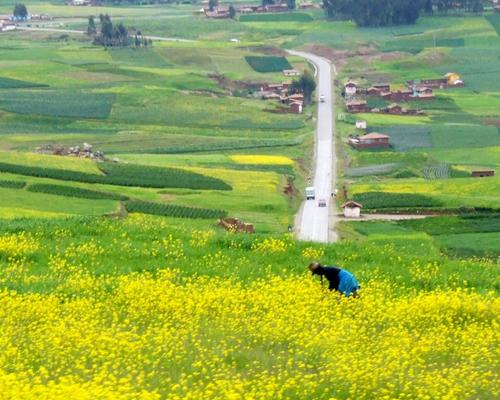 MARCH
MARCH
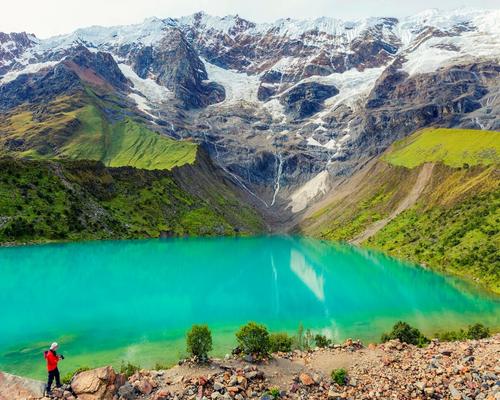 APRIL
APRIL
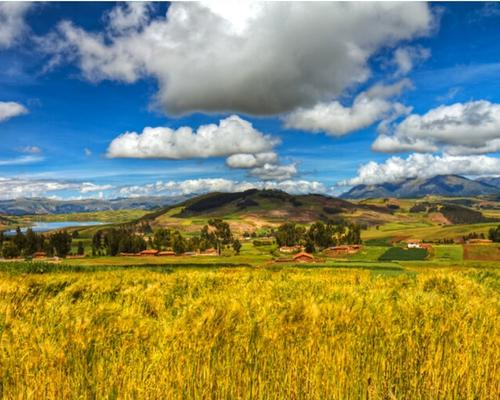 MAY
MAY
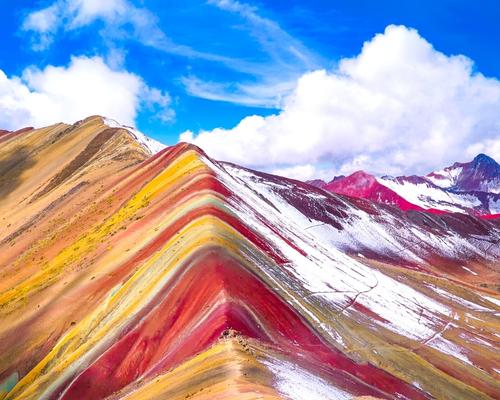 JUNE
JUNE
 JULY
JULY
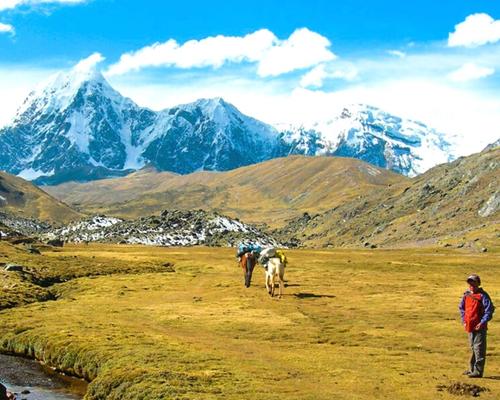 AUGUST
AUGUST
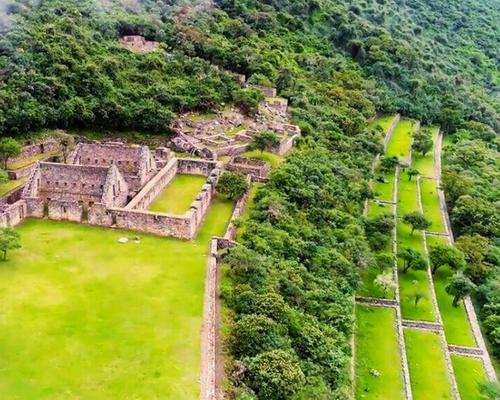 SEPTEMBER
SEPTEMBER
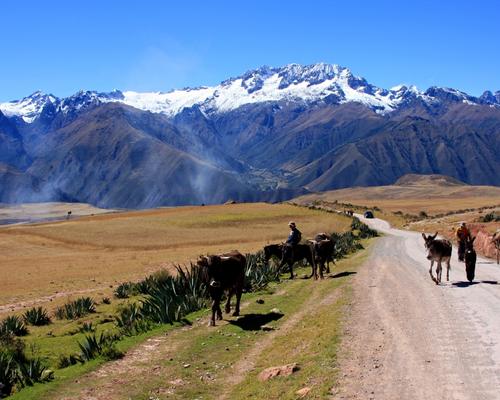 OCTOBER
OCTOBER
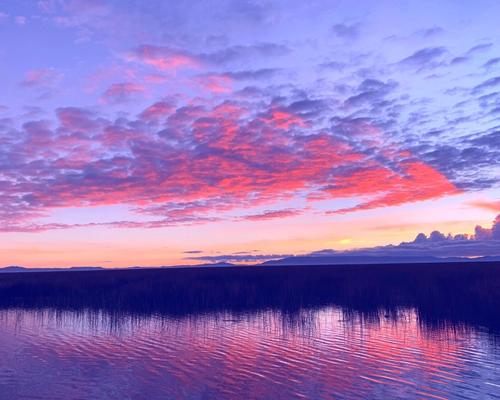 NOVEMBER
NOVEMBER
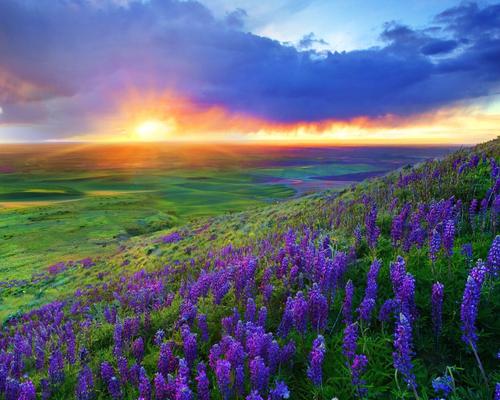 DECEMBER
DECEMBER
To book this tour, a minimum of $ 200 USD per person is required, the remaining balance will be paid upon arrival in Peru, at the Cusco office.
Any other additional information, please coordinate with your travel agent.



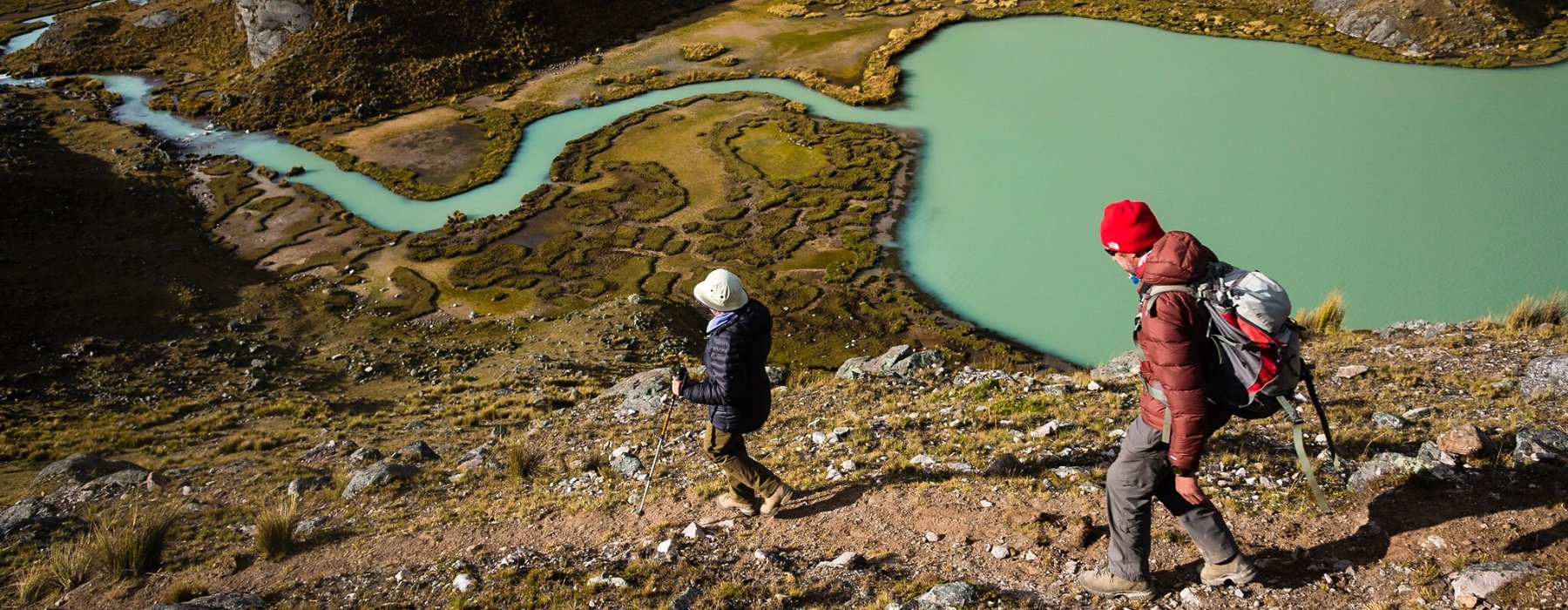
Nothing gets you closer to a country than walking through it, and we’ve got trips to suit walkers of all levels and interests.

All our Walking trips are graded from ‘Easy’ through to ‘Challenging to Tough’. On our online trip itineraries you’ll find a chart showing the daily walk distances, timings and information on the route including the terrain, altitude. Generally, no specific training is needed but you might feel more comfortable if you’ve got out walking a few times in the lead-up to your trip.
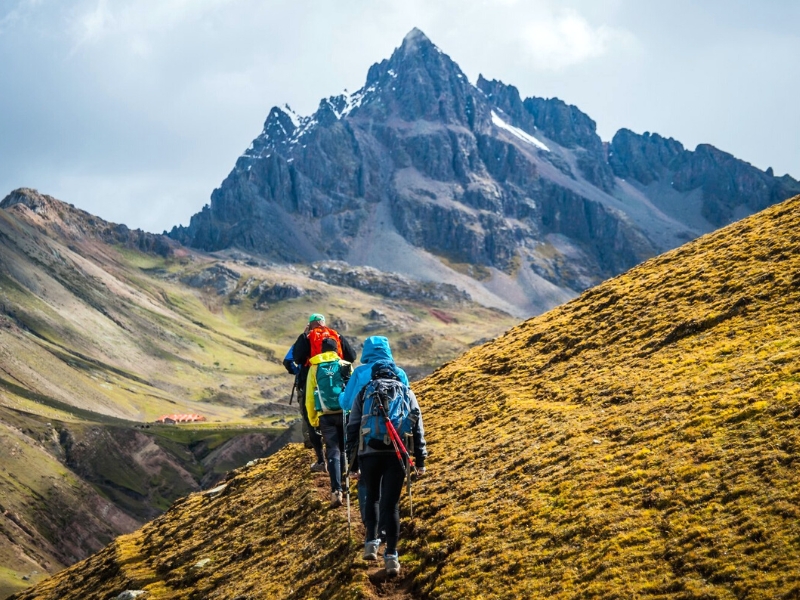
As with all our trips, every group is different but the ‘average’ group consists of roughly half couples and half solo travellers – all sharing a passion for exploring the world on foot. You’ll always have someone to keep you company along the route, but you don’t always have to walk together. Wherever possible your Andean Great Treks leader will allow everyone to walk at their own pace, regrouping regularly along the route.

Mostly of our hikes in the mountains in Peru and Cusco like the classic Inca Trail to Machu Picchu, Ausangate Trek, Lares Trek, Ancascocha Trek, Salkantay Trek , involves an average of walking hours of 7-8 hours per day, this timing includes stops for taking photos, lunch, breaks for recovery the energy, and the most important we adapt to your walking pace. This relaxed style of trip involves to know all the attractions in greater depth.
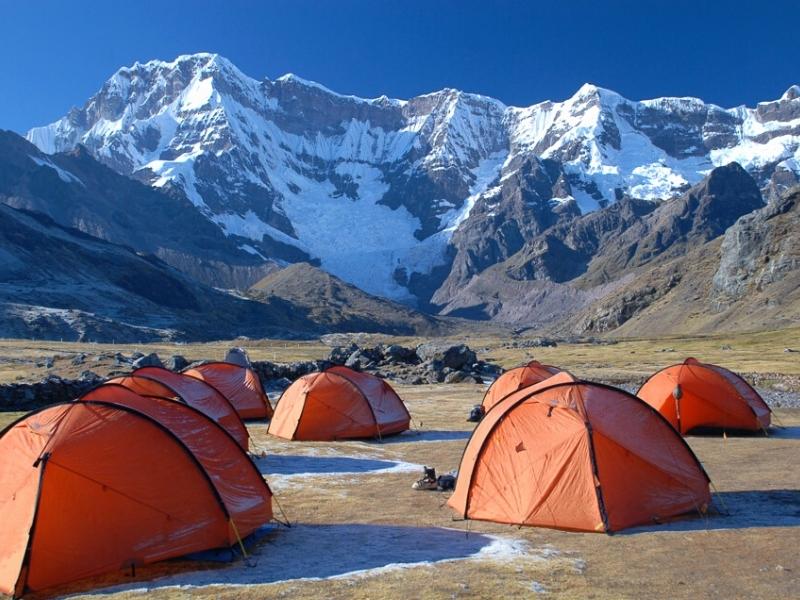
On nearly all our Walking trips, porters or mules will carry all the camping equimpent, so your main luggage will be transported for you. We recommend walk with a light rucksack, you will carry water, snacks, a camera, a small first aid kit and any extra clothing or sun protection. On more remote or challenging treks, additional guides are there to assist the leader tour guide and provide support to the group.
The acclimatization period is very important for our travelers to enjoy the experience. We suggest a minimum of 3 or 4 days of the previous stay in Cusco city, the Sacred Valley of the Incas or Machu Picchu. We recommend you check the acclimation programs we have prepared for you on our website.
The average height of our camps in the trekking circuits is 3,500 masl. In fact, one of the circuits where you sleep at the highest altitude is the Ausangate Trek, where you will have days to set up the tents at a height of 4,300 meters. Remember that Peru has snowy peaks that reach up to 6,700 masl.
From 3,000 meters above sea level, the symptoms of “altitude sickness” vary according to each person, and may even not occur. However, among the most common are a headache, dizziness, nausea, loss of appetite and insomnia. Therefore, upon arriving in the city of Cusco, located at 3,400 meters above sea level, we recommend our travelers to take a good rest, drink plenty of water, eat light meals and take slower walking. Also, it is necessary to avoid alcoholic beverages and cigarettes. The symptoms can be alleviated with high mountain medicines such as DIAMOX or similar products, but we suggest you consult with your doctor before the trip.
While on the trail, hikers will need to carry a daypack (camera equipment, water bottle, extra layers, rain gear, and other accessories you might need on the trail.) Horses and llamas will carry your duffle bag to the next camping site.
The company makes the greatest efforts to provide a safe and unforgettable experience, for this reason, the trekking guides are constantly communicated with the central office through satellite phones, ensuring the welfare of each passenger. Our guides are trained in rescue techniques and first aid in emergency outdoor, these courses are developed annually and have the standards of the wilderness first respond. At all times we have oxygen and first aid equipment. In case of any eventuality a medical director will answer our questions 24 hours a day. In addition to the animals who carry the luggage we have horses to help walkers tired or eager to ride. We recommend getting a travel insurance.

Every Andean Great Treks holiday has been thoughtfully planned and crafted by our specialists. They draw on their own extensive travel experience and the guidance and expertise of our local partners to create superb holidays. Our specialists are committed to making every aspect smooth and enjoyable; they genuinely want to ensure that the holidays they create leave you with wonderful lasting memories.
Every Andean Great Treks traveller is accompanied by an experienced tour guide, you will be immersed in Historic cities, ancient ruins and unfamiliar landscapes are all brought to life by our carefully selected local guides. They want to share their expertise and help you make your own discoveries too; their sole mission is to ensure you enjoy every moment.
Giving you the freedom to make your holiday even more memorable. We know how much our customers look forward to their holiday and we pride ourselves on the choice and flexibility that we offer to enhance every aspect of your experience. Whether it’s getting to the airport, upgrading your room or booking an additional excursion, we can help.

Our guides are the stars of the show; it is their unrivalled knowledge, passion and expertise that will transform your tour experience from good to truly extraordinary!
Because the have grown up in the area and know it like the back of their hand, so they can help you experience whichever aspects most interest you. They’re passionate about sharing their corner of the world with you, and as you explore together, they’ll open your eyes to the intricate details, provide background to enhance your understanding of what you’re seeing, and share stories that will bring everything to life.
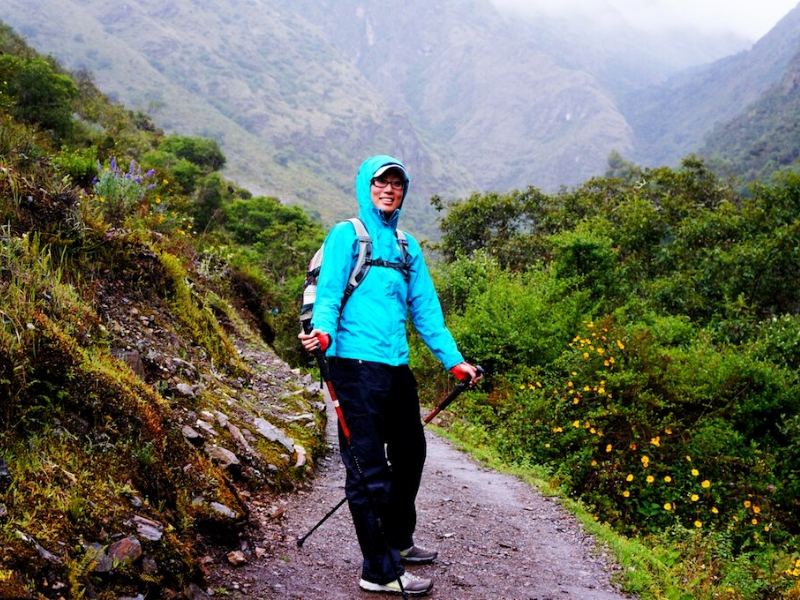
“Your inspiration for a trip can be a single word or a highly evolved outline, but it’s the conversations we have that help us understand the experience you’re looking for. Meanwhile, I’m looking back on the time I spent at the destination.
‘The great thing about working with a specialist at Andean Great Treks is how they take your complete jumble of ideas and turn them into something absolutely spectacular.’
As you begin to share your ideas with your specialist, it will connect them immediately back to a time in their own travels. Conjuring a picture of the rest time they made that same discovery, reminding them how it felt.
Your specialist understands that, when the journey is right, it has the power to excite your emotions in the most profound ways after all, that was the effect on them.
They carry a treasure box of moments, captured over many journeys, into every suggestion they’ll share with you, as they ask you how you want to feel on your trip.
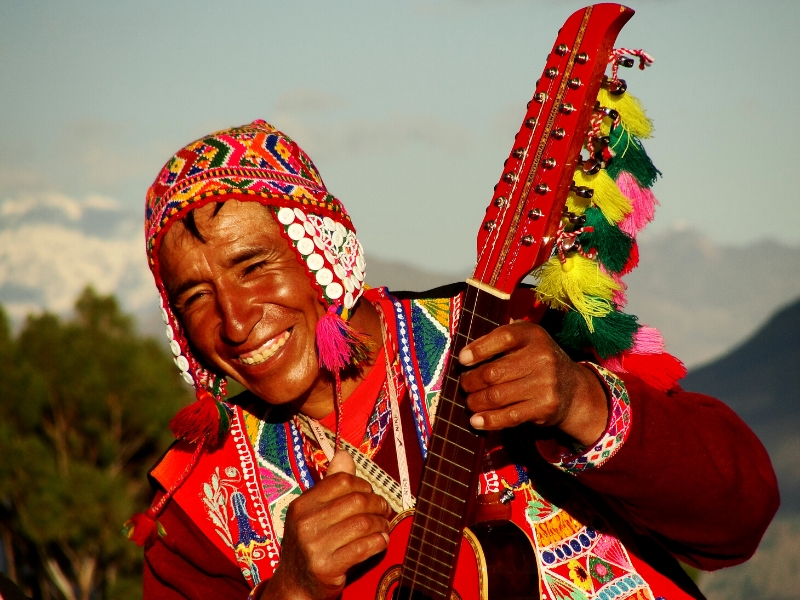
EXPERIENCES THAT CALL TO YOU
It’s what you do in a destination that helps bring it to life. It’s why we strive to choose experiences that help you connect to a place, absorbing a little of its complex character. Wherever your passions lie, we’ll recommend experiences that speak to you, and we’ll recommend the guide or local expert who’s most qualified to help you explore. Packing your holiday full of special experiences means some early starts and long days, but you can be sure that you’ll return home with many incredible memories! Read our Tours and check the Physical Ratings to see if the pace and activity levels are right for you.

STAYS WITH DIFFERENCE
We know that where you stay is a cherished part of your travels. So, we go to great lengths to find places to stay that exceed expectations, or go above and beyond the ordinary, whether in their character, hospitality, or location. Over the years, we’ve discovered the very best properties, trying and testing them, so we can choose the right one for you. We’ve nourished long-standing relationships with these establishments and the people who founded them, and we’ve stayed there many times often, we’ll even know which rooms have the best views (and reserve them for you).
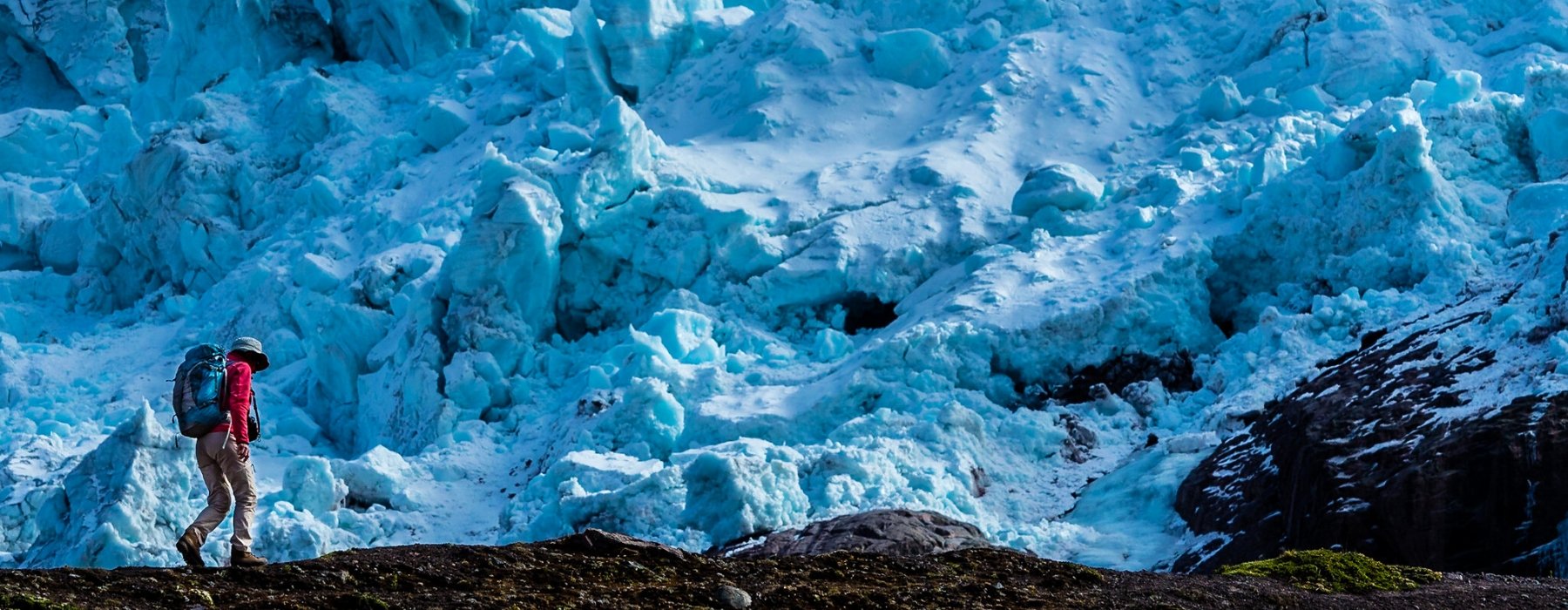
Our style of travel — authentic, thoughtful, and focused on building meaningful connections to the people and places you visit — is inherently respectful and considerate of the destinations we love. We design each aspect of your trip exactly as you want it, which includes its sustainability. That might mean choosing a train journey instead of a flight, staying at eco-friendly wildlife lodges, or opting for experiences that give back to the communities you’re visiting. The choice is yours.
Responsible travel has always been at the heart of what we do. First and foremost, because it gives you the best experience, but, also because it helps to preserve the communities and landscapes you visit. This isn’t new for us we collaborated with local communities and outside experts so we can grow to be better ambassadors.
The most authentic and interesting experiences often directly benefit the local people. We prefer to buy local products that are produced in the organic farms of the Sacred Valley, we also have alliances with local artisan organizations who provide us with souvenir items for our clients, your money directly benefits the local economy.
Our style of travel — authentic, thoughtful, and focused on building meaningful connections to the people and places you visit — is inherently respectful and considerate of the destinations we love. We design each aspect of your trip exactly as you want it, which includes its sustainability. That might mean choosing a train journey instead of a flight, staying at eco-friendly wildlife lodges, or opting for experiences that give back to the communities you’re visiting. The choice is yours.
Responsible travel has always been at the heart of what we do. First and foremost, because it gives you the best experience, but, also because it helps to preserve the communities and landscapes you visit. This isn’t new for us we collaborated with local communities and outside experts so we can grow to be better ambassadors.
The most authentic and interesting experiences often directly benefit the local people. We prefer to buy local products that are produced in the organic farms of the Sacred Valley, we also have alliances with local artisan organizations who provide us with souvenir items for our clients, your money directly benefits the local economy.
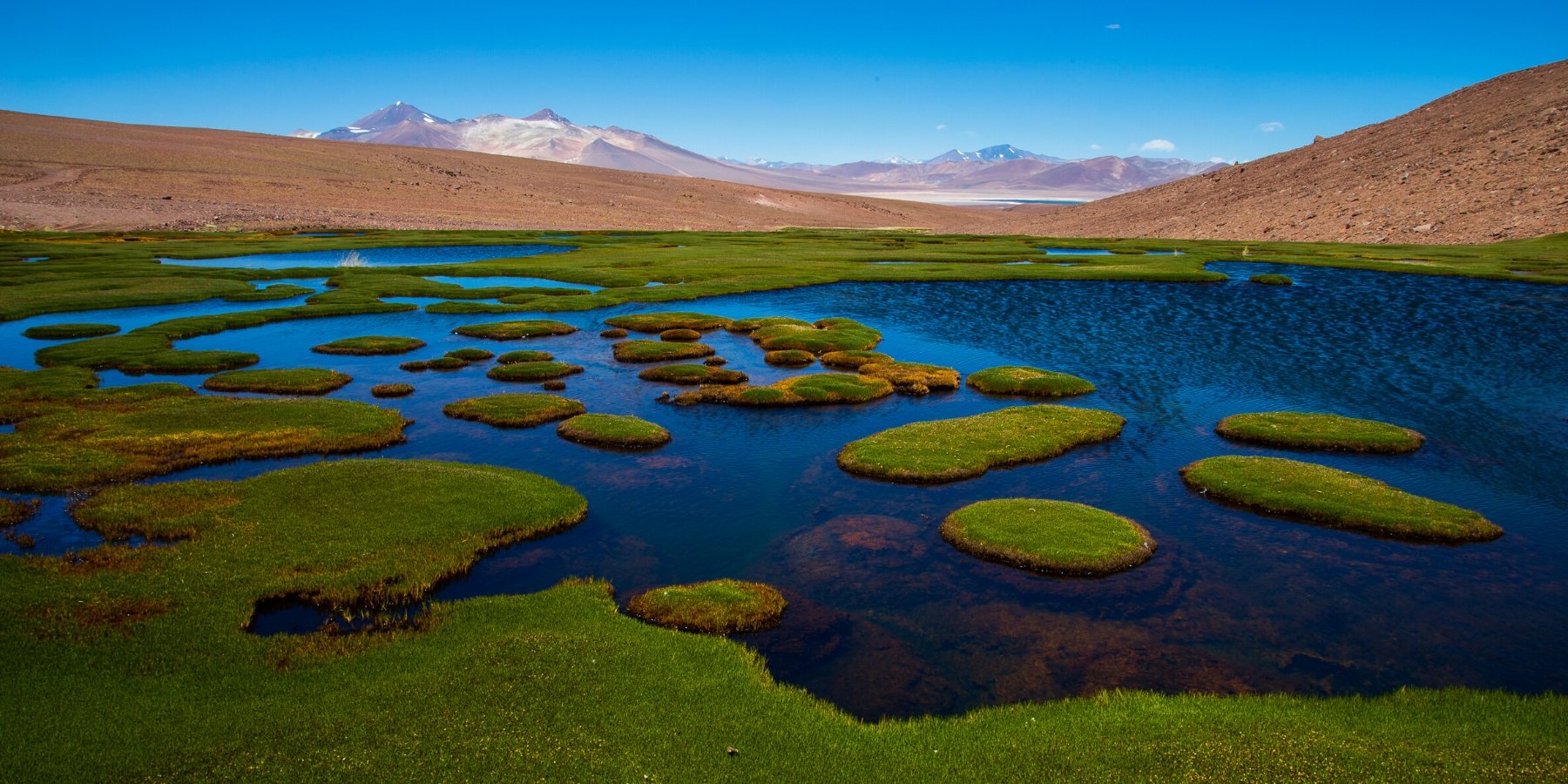
‘There’s a saying: we don’t inherit the Earth from our ancestors, we borrow it from our children. When we show you our country, this philosophy guides everything we do. It’s our responsibility to preserve the environment and wildlife, and support communities. That means using slower modes of transport, like cycling, employing local people, and working with communities who’ll benefit directly from your visit. This also gives you the best, most authentic impression of the places we want to share with you.
We prefer to buy local products in ecological bags, to avoid the use of plastic bags, likewise we teach the use of soaps and ecological products in each tour that we organize. We also work on reforestation projects with local communities who take care of landscape resources such as communal reserves, national parks.
‘There’s a saying: we don’t inherit the Earth from our ancestors, we borrow it from our children. When we show you our country, this philosophy guides everything we do. It’s our responsibility to preserve the environment and wildlife, and support communities. That means using slower modes of transport, like cycling, employing local people, and working with communities who’ll benefit directly from your visit. This also gives you the best, most authentic impression of the places we want to share with you.
We prefer to buy local products in ecological bags, to avoid the use of plastic bags, likewise we teach the use of soaps and ecological products in each tour that we organize. We also work on reforestation projects with local communities who take care of landscape resources such as communal reserves, national parks.

The salkantay trek with the short Inca trail to Machu Picchu, amazing trek with beautiful landscapes of mountains and forests, explore the original Inca trail to Machu Picchu.
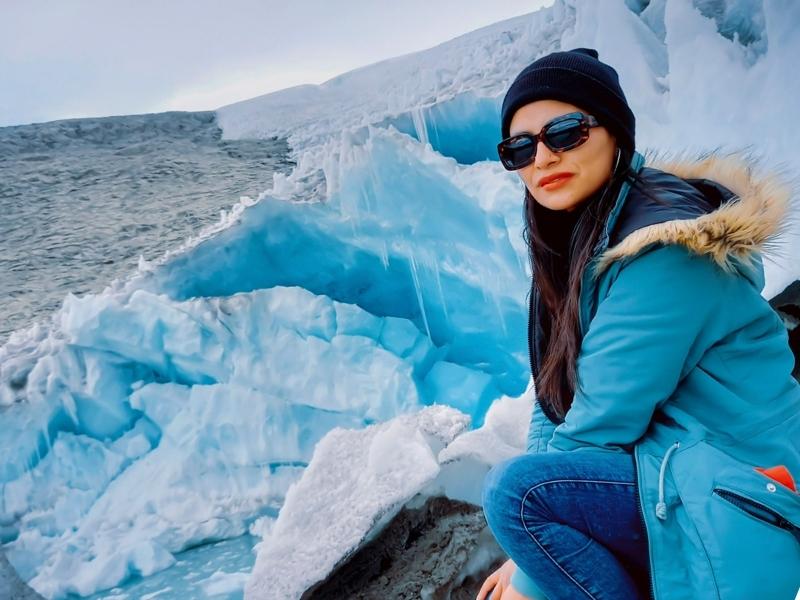
Explore the impressive red valley and Vinicunca Mountain of Colors. Visit the largest tropical glacier in the world Quelccaya next to the beautiful blue Sibinacocha Lagoon, surrounded by snowy peaks and plains inhabited by llama herders.

This adventure is for people who really want to experience nature and the Andes at its best: snow covered mountains, deep valleys, pristine lakes, animals such llamas, alpacas, vicuñas, and encounters with indigenous people who live in these high mountains.